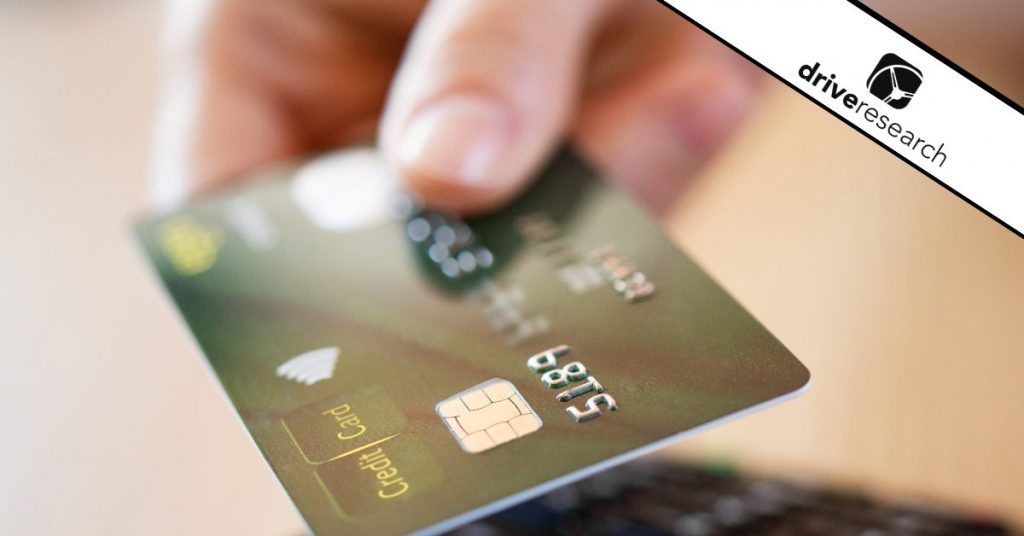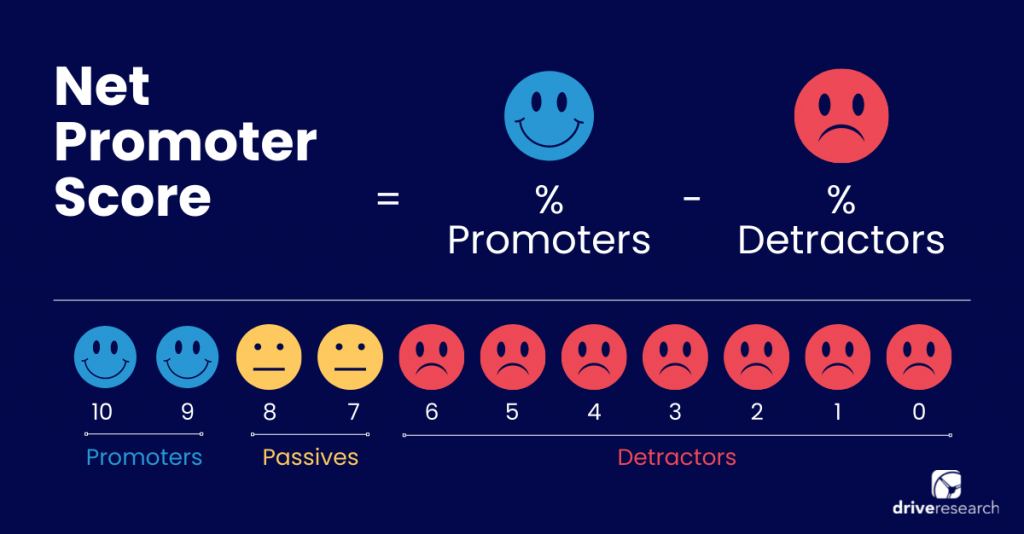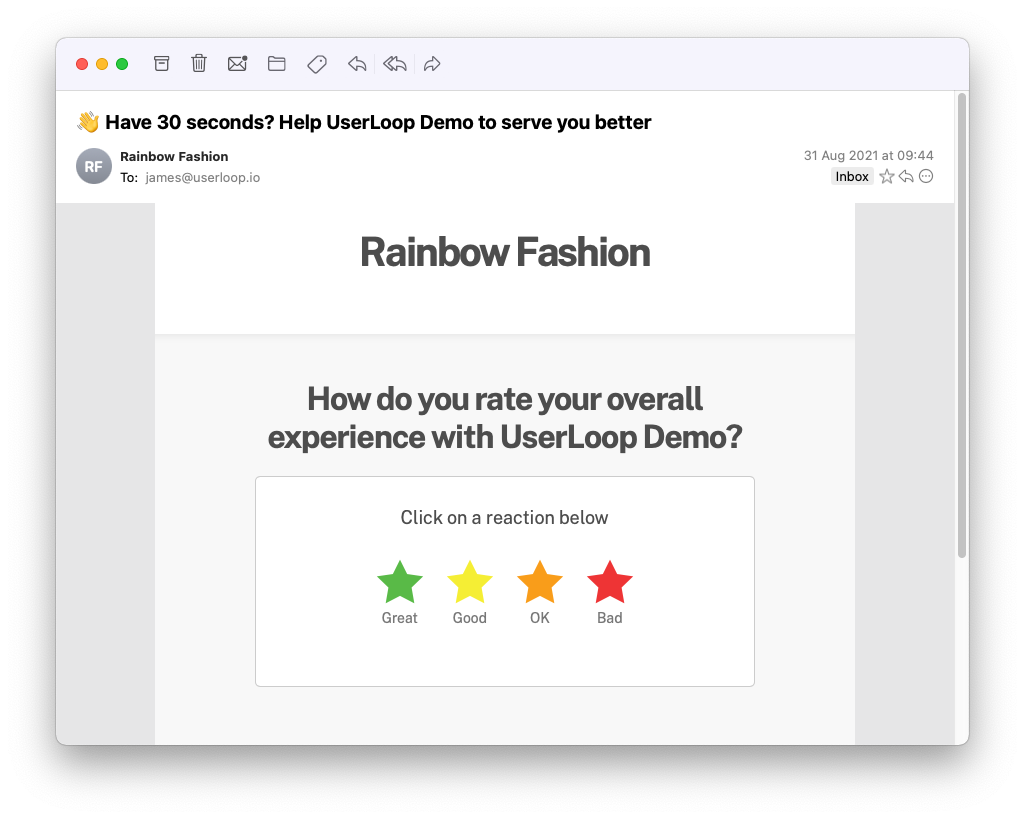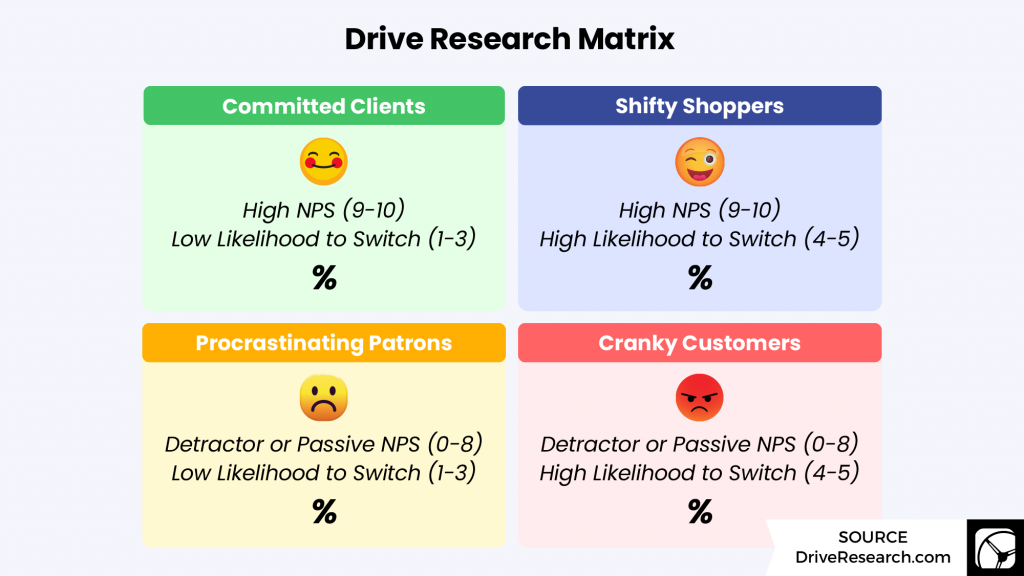
The Transactional Net Promoter Score (tNPS) is a variation of the traditional Net Promoter Score (NPS) used to measure customer satisfaction and loyalty.
While the traditional NPS typically gauges overall customer loyalty based on responses to a single survey question (“How likely are you to recommend our product/service to a friend or colleague?”), tNPS focuses on specific transactions or interactions between a customer and a business.
Keep reading as we discuss how to calculate tNPS, example questions, and how measuring it can help improve customer experience.
How Can You Calculate Transactional Net Promoter Score (tNPS)?
Typically in an online survey, customers are asked to rate their likelihood of recommending a company based on their most recent transaction or experience.
This approach allows businesses to gather more targeted feedback on specific touchpoints along the customer journey, such as after a purchase, a customer service interaction, or a support request.
The tNPS calculation is similar to the traditional NPS, with respondents typically asked to rate their likelihood of recommending the company on a scale from 0 to 10.
Responses are then categorized into three groups:
- Promoters (score 9-10): Customers who are highly satisfied and likely to recommend the company.
- Passives (score 7-8): Customers who are satisfied but may not actively promote the company.
- Detractors (score 0-6): Customers who are unhappy and may potentially harm the company’s reputation through negative word-of-mouth.
The tNPS is calculated by subtracting the percentage of detractors from the percentage of promoters. The resulting score can range from -100 to +100, with higher scores indicating stronger customer loyalty and satisfaction.

Why Is tNPS Different From Normal NPS?
Transactional Net Promoter Score differs from traditional NPS in several key ways:
- Focus on Specific Transactions or Interactions: While traditional NPS typically measures overall customer satisfaction metrics, tNPS focuses on specific transactions or interactions between the customer and the business. This allows companies to gather feedback on individual touchpoints along the customer journey.
- Timeliness: tNPS surveys are often conducted immediately after a transaction or interaction, providing real-time feedback on customer satisfaction. In contrast, traditional NPS surveys may be conducted at regular intervals (e.g., quarterly or annually), providing a broader but less immediate view of customer sentiment.
- Actionability: Because tNPS surveys are tied to specific transactions or interactions, companies can more easily identify and address issues raised by customers. This increased granularity and specificity make tNPS feedback more actionable for improving the customer experience.
- Customer Expectations: tNPS acknowledges that customer expectations may vary depending on the specific transaction or interaction. For example, a customer may have different expectations when interacting with customer support compared to making a purchase. By measuring satisfaction at the transactional level, tNPS provides insights into whether these expectations are being met.
Overall, our net promoter score company finds that tNPS complements traditional NPS by providing a more detailed understanding of customer satisfaction at specific touchpoints along the customer journey.
This allows companies to take targeted actions to improve the overall customer experience and drive loyalty.
How tNPS Can Help Your Customer Experience
From our experience, businesses that measure tNPS create more positive and seamless interactions that delight customers and differentiate their brand in the marketplace.
That’s because tNPS allows you to gather feedback right after specific interactions or transactions, providing immediate insights into customer sentiment.
This timely feedback enables you to address issues promptly and prevent negative experiences from escalating.
Plus, being armed with tNPS feedback, you can prioritize actions based on their impact on customer satisfaction and loyalty.
Whether it’s addressing recurring issues, enhancing specific features, or improving processes, tNPS helps allocate resources effectively to deliver maximum value to customers.
Different Types of tNPS Surveys
Overall, each type of tNPS survey serves a specific purpose in gathering transactional feedback from customers, whether it’s related to a purchase, interaction, event-triggered action, or service experience.
Here’s an explanation of the different types of Transactional Net Promoter Score surveys:
Post Purchase Surveys
Post-purchase surveys are conducted immediately after a customer completes a purchase transaction.
These surveys aim to gather feedback on the overall purchasing experience, including factors such as product selection, checkout process, payment options, and delivery or shipping experience.
More specifically, post-purchase surveys help businesses…
- Understand customer satisfaction levels following a purchase
- identify any issues or concerns encountered during the transaction
- Assess the likelihood of customers recommending the brand based on their recent purchase experience

Follow-Up Surveys
Follow-up surveys are sent to customers shortly after a specific interaction or engagement with the company, such as a customer service call, email correspondence, or support ticket resolution.
These types of tNPS surveys aim to gather feedback on the quality of the interaction, the helpfulness of the support received, and overall satisfaction with the resolution.
Event-Trigger Surveys
Event-triggered surveys are automatically triggered by specific events or actions taken by customers, such as completing a transaction, visiting a website, or using a product feature.
They can be designed to gather feedback at various touchpoints along the customer journey, capturing insights into customer satisfaction and loyalty in real time.
Event-triggered surveys help businesses understand customer sentiment at key moments of interaction, identify opportunities to enhance the user experience, and address issues or concerns promptly to prevent churn and foster customer loyalty.
Post-Service Surveys
Lastly, post-service surveys are conducted following the completion of a service-related interaction, such as receiving technical support, maintenance, or repairs.
Businesses choose these surveys because they collect feedback on the quality of the service received, the professionalism of the service provider, and overall satisfaction with the service experience.
Post-service surveys enable businesses to evaluate the effectiveness of their service delivery processes, identify areas for improvement in service quality, and measure the impact of service interactions on customer loyalty and advocacy.
What Influences Your tNPS Rating
Your tNPS is influenced by various factors. From our experience, the most common factors include…
- The quality of your products or services
- The ease and effectiveness of your customer interactions
- The reliability of your delivery or fulfillment processes
- The overall consistency of your brand experience
Ultimately, providing exceptional customer experiences across all touchpoints and consistently meeting or exceeding customer expectations are key drivers of a high tNPS rating.
Example Questions We Would Ask For a tNPS Survey
Here are some example questions our market research company recommends including in a Transactional Net Promoter Score survey:
- On a scale of 0-10, how likely are you to recommend [Company/Product/Service] based on your recent [purchase/interaction/service experience]?
- What was the primary reason for your score?
- Were you satisfied with the [product/service] you received today?
- How would you rate the ease of [purchasing/using/receiving support] from [Company] today?
- Did our [product/service/support] meet your expectations? Why or why not?
- How likely are you to make a repeat purchase or use our services again in the future?
- Did you encounter any issues or challenges during your recent interaction with [Company]? If so, please elaborate.
- How would you rate the professionalism and helpfulness of our [sales/customer service/support] team?
- Is there anything we could have done differently to improve your experience today?
- Would you like to provide any additional feedback or suggestions for how we can enhance our [product/service/customer experience]?
These NPS questions aim to gather insights into the customer’s satisfaction levels, the reasons behind their score, any issues or challenges encountered, and opportunities for improvement.
How to Act On Your tNPS Feedback
Taking the step to measure your tNPS is only the beginning. To see the ROI of conducting transactional Net Promoter Score surveys, it’s important to make a plan for how to take action with customer feedback.
To effectively address customer concerns and improve the overall customer experience, we recommend the following steps:
1. Analyze Feedback:
Review tNPS feedback carefully to identify recurring themes, trends, and specific areas for improvement. Pay attention to both quantitative scores and qualitative comments provided by customers.
2. Prioritize Action Items
Prioritize action items based on their potential impact on customer satisfaction and loyalty. Focus on addressing issues that are most critical or have the greatest influence on the customer experience.

3. Develop Action Plans
Develop action plans to address identified issues and opportunities for improvement. Assign responsibilities, set timelines, and establish clear objectives for implementing changes.
4. Engage Stakeholders
Engage relevant stakeholders across your organization, including customer-facing teams, product development, operations, and management. Collaborate to ensure alignment and support for implementing tNPS-driven initiatives.
5. Implement Changes
Implement changes and improvements based on the feedback received. This may involve revising processes, enhancing product features, optimizing customer service procedures, or other relevant actions.
6. Monitor Progress
Continuously monitor progress and track the impact of implemented changes on tNPS scores and customer satisfaction metrics. Evaluate effectiveness and adjust strategies as needed to achieve desired outcomes.
7. Seek Continuous Feedback: Continue to gather feedback from customers through tNPS surveys and other feedback mechanisms. Use this ongoing feedback to identify new opportunities for improvement and ensure that the customer experience remains a top priority.
By taking proactive steps to act on tNPS feedback, you can address customer concerns, drive meaningful improvements, and cultivate long-term loyalty and advocacy among your customer base.
Contact Our Net Promoter Score Company
Need assistance or advice on your upcoming transactional net promoter score survey project? Our team of experts can help develop a custom plan for you with an approach, recommended critical metrics, a sample plan, and much more.
Drive Research can walk through your objectives and develop a proposal.
Contact us through any of the four channels below.
- Message us on our website
- Email us at [email protected]
- Call us at 888-725-DATA
- Text us at 315-303-2040



